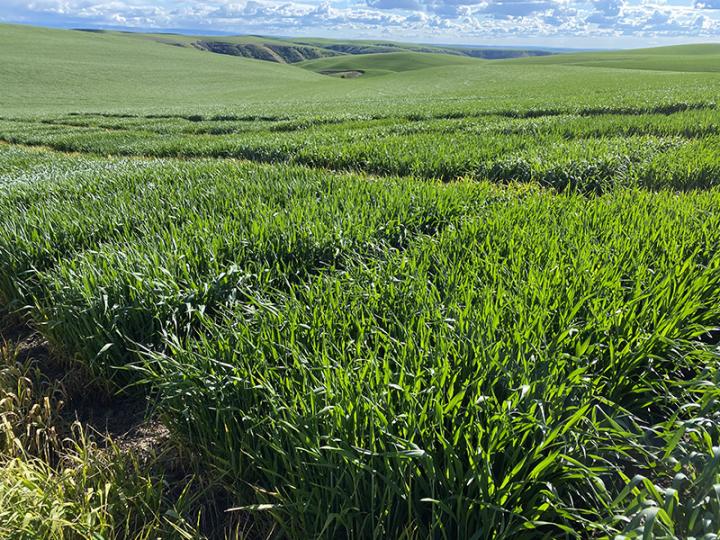
Credit: courtesy of Arron Carter
A plant breeder’s goal is to release cultivars that are commercially economical and environmentally sustainable. Breeders never know how well new cultivars will perform under commercial production until they are released and grown across different environments.
In an article recently published in the Journal of Plant Registrations, a journal of the Crop Science Society of America, researchers examined the impact the cultivar ‘Madsen’ on Pacific Northwest wheat, as well as other national and international breeding programs. Madsen has been grown in the Pacific Northwest for over 30 years–it was the most widely grown wheat cultivar from 1991 until 2004. It was found that of the new cultivars that were replacing Madsen in production, many of them had Madsen as a parent of the cultivar.
Madsen was released because of its resistance to strawbreaker foot rot and stripe rust, both of which are fungal diseases. Through subsequent research, Madsen was also found to be resistant to nematodes and Wheat yellow mosaic virus, and moderately resistant to common bunt and powdery mildew. Although not fully resistant, it was also less susceptible than other commercially available cultivars to stresses like low pH soils and Cephalosporium stripe.
The excellent resistance to biotic and abiotic stress of Madsen contributed to its widespread success in the Pacific Northwest, and has also allowed it to be used in breeding programs across the globe to protect the wheat crop against many diseases which threaten global food security.
###
Adapted from Carter, AH, Allan, RE, Shelton, GB, et al. How ‘Madsen’ has shaped Pacific Northwest wheat and beyond. J. Plant Regist. 2020; 1- 11.
Media Contact
Rachel Schutte
[email protected]
Related Journal Article
http://dx.




